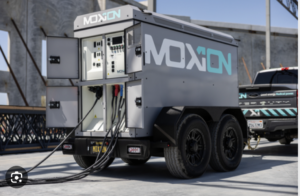The research engineer teaches a course on renewable energy at the University of Minnesota. He had already cut back on his energy use and converted his home to LED lights.
Then Schmidt heard about a community solar project his utility company, the Wright-Hennepin Cooperative Electric Association, is building. Instead of spending around $40,000 to install solar panels on his home, Schmidt could purchase a single panel for $869.
“This way, I can do it little by little, buy one panel at a time,” he said.
Schmidt will see a discount of a few dollars on his monthly electricity bill. He will also get the satisfaction of creating renewable energy for his community that won’t be affected by fluctuating prices of fossil fuels.
“We’re contributing some pretty stable power to the grid,” Schmidt said.
Community solar projects, popping up across the USA, are being touted as a model that makes solar power both affordable and accessible to everyone. The projects allow everyone to get involved in producing solar power, “not just the ones with a really good south-facing roof,” said Eric Jensen, chairman of the Minnesota Renewable Energy Society.
Elsewhere:
Clean Energy Collective of Carbondale, Colo., which is building the Wright-Hennepin project, has built or is building six others in Colorado and New Mexico and has six more in the works, said Tom Sweeney, chief operating officer.
“It’s going to accelerate very quickly in the next few years,” he said.
A solar project built in 2008 in University Park, Md., was one of the first of its kind in the nation. A group of residents formed a limited liability company and raised $133,000 from investors, said President David Brosch.
The 99-panel solar array was built on the roof of a church, which purchases about 25% of the power it generates. The surplus electricity is sold back to the grid, Brosch said.
“The panels have been running really well,” he said. “We’ve actually generated more than we thought.”
Two solar projects were built the past two years in rainy northern Washington state, one owned the Okanogan County Electric Co-op and another by 32 co-op members who invested a minimum of $5,000 each, said Nilsene Harris, a co-op staffer.
Community solar projects can be built on a roof of a large building such as a school or in an open area. Wright-Hennepin’s will be next to the utility’s headquarters in Rockford, Minn.
The projects also can be built on land that is unsuited for other development, such as an old landfill, or next to a wetland because there’s no environmental impact, Masia said.
The laws regulating local power generation vary from state to state. Colorado passed a law two years ago allowing community solar projects, which is why so many are being built there, Sweeney said.
Clean Energy Collective enters into a long-term power purchase agreement with the local utility such as Wright-Hennepin. Clean Energy sells panels to individual homeowners, schools and local governments.
Each month, it calculates the amount of energy produced by those panels and credits the customer on his or her utility bill, Sweeney said.
It’s less expensive for the company to build the projects on an industrial scale than for homeowners to install panels themselves. For consumers, the payback period varies, Sweeney said. For the Colorado projects, it’s usually 12-14 years. For Wright-Hennepin, it’s closer to 20 years because of the added cost of the batteries.
Wright-Hennepin’s project has been popular among co-op members so far. About half of the 216 panels have been claimed.
“I think it’s just the ease of being able to get into solar,” said Rod Nikula, vice president of power supply. “They want to be able to try it a little bit.”
Each panel generates about 25 kilowatt hours of electricity each month. It would take 25-30 panels to generate all the power used by the typical household, Nikula said.
One unique aspect of the Wright-Hennepin project: It will use batteries to store solar energy during the peak production hours in the daytime so it can be used during times when it’s needed the most. That’s important because the co-op is made up mainly of residential customers, Nikula said.
“Our peak demands occur around suppertime, when everybody comes home from work and occupies the home again,” Nikula said.
Marohn also reports for the St. Cloud (Minn.) Times


 Moxion and NUE
Moxion and NUE